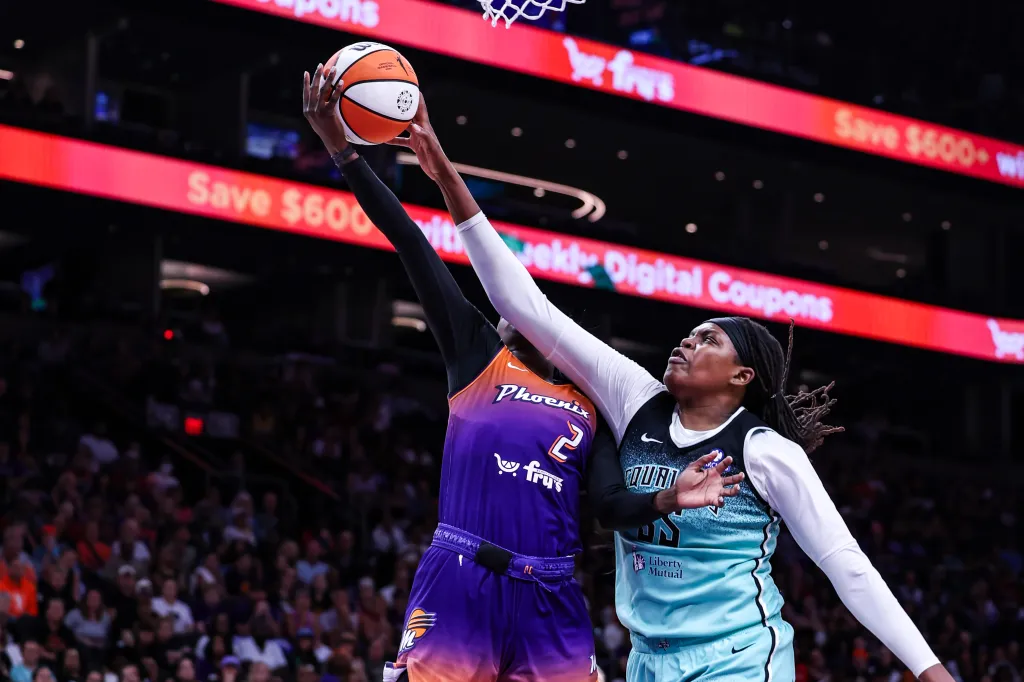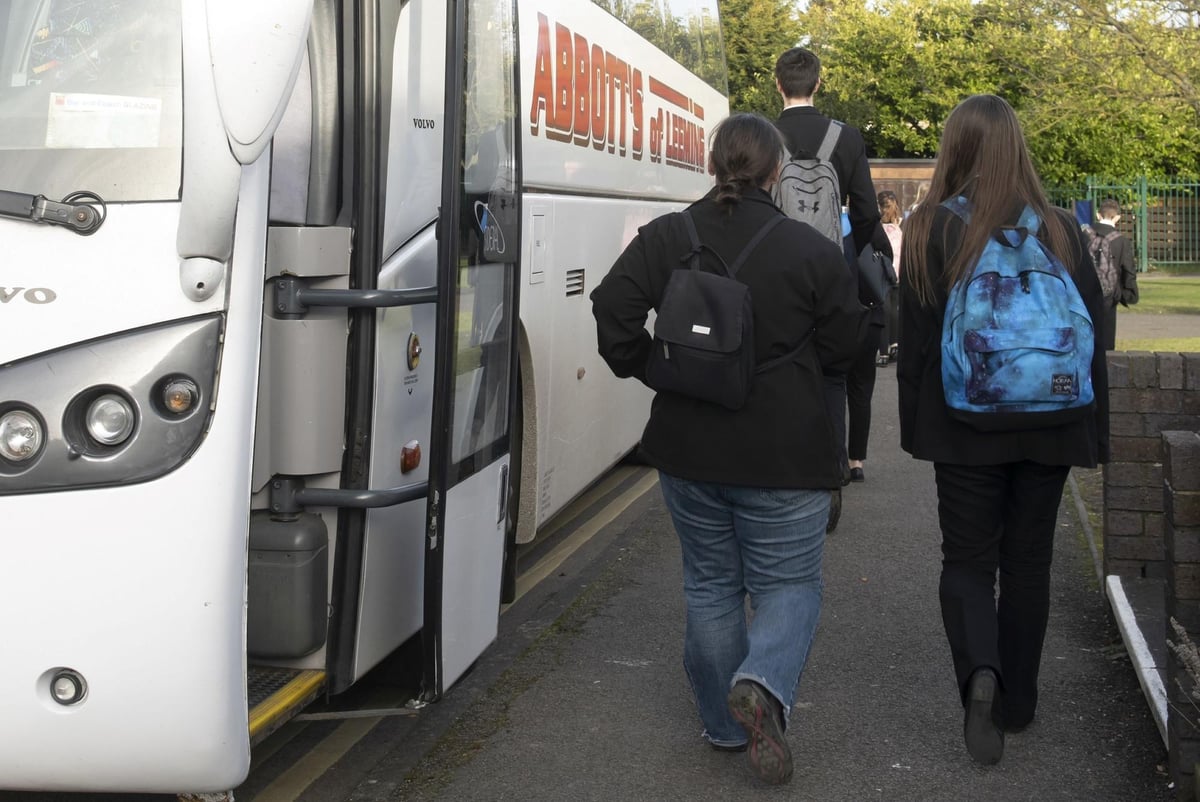
The 2025 WNBA postseason is underway — and so is its change to the first-round series.
Last October, WNBA commissioner Cathy Engelbert announced that the first-round best-of-three series would follow a 1-1-1 format, with the higher seeds hosting Game 1 and a decisive Game 3.
That’s been on full display after the conclusion of the league’s first-ever 44-game regular season. And teams are sounding off on the change.
“I don’t know if there’s advantages. I think it’s the best setup for the league,” second-year Mercury head coach Nate Tibbetts said of the 2025 format. “I think the league needs 1-1-1.”
The new format differs from the previous 2-1 format that’s been in place beginning in 2022. Before 2025, lower seeds weren’t guaranteed a home playoff game as higher seeds hosted Games 1 and 2.
From 2016-21, fifth-seeded teams hosted eighth-seeded teams and sixth-seeded teams hosted seventh-seeded teams in a single elimination game into the second round.
The 1-1-1 format was first introduced in 1998 when just four — two Western and Eastern Conference teams apiece — out of 10 teams made the postseason. But its game sequencing differed from the current 2025 format.
In its first iteration, higher seeds were awarded Games 2 and 3 (if necessary). The opening game of the series was played at the home of the lower seed.
The following postseason, the bracket expanded to six teams. The first seed in each conference received byes as seeds two and three played in a single-elimination first-round matchups.
The format changed again in 2000 as eight of 16 teams — four squads per conference — battled in a best-of-three first-round series. This time, higher seeds hosted Games 2 and 3 (if necessary). The format and game sequencing continued to change throughout the following years before the 2016 format was implemented.
And in the league’s inaugural 1997 postseason, four teams with the best record were seeded one to four and competed in single-elimination games throughout the playoffs.
The previous formats since the WNBA’s inception created all type of advantages and disadvantages: some teams in different eras weren’t guaranteed a single home playoff game after battling for a seed during the regular season.
A whole regular season of work — albeit in a time when lesser games were played in a WNBA season — felt like it was tossed away if a team played poorly for a quarter in a single-elimination game that led to a loss.
And a championship-caliber No. 1 seed team may not have even gotten close to hoisting the trophy because they got eliminated in a first-round do-or-die Game 3 loss played in a hostile road arena.
That’s a scenario that could’ve been in play last year as the Atlanta Dream were a few clutch plays away from seizing momentum from eventual champion Liberty in a Game 2 at Barclays Center.
But of course, the Liberty defended home court in that Game 2 in a 2-1 format, moved on and the rest was history.
Just a year later, it’s the No. 5 seed Liberty that pushed the No. 4 seed Mercury to the brink in this new format. An overtime Game 1 win in Phoenix stole home court from the Mercury, setting up an elimination game at Barclays Center with a chance to move on.
An end-of-regulation missed layup by Alyssa Thomas in a tie game changed the dynamic of the series within the blink of an eye. If she converted, it’s the Liberty facing an elimination after just one game.
But Thomas missed. And the series flipped on her team.
It happens so fast in the WNBA.
“Obviously, I would have liked it a lot more if you win Game 1, coming here [Brooklyn] for Game 2,” Tibbetts said. “But I think this is the right thing to do. I think everybody deserves a home game.”
An argument could be made to adjust the current format.
The current first-round format provides two days for rest and travel between Games 1 and 2 — but just a single travel day between Games 2 and 3. The travel is more grueling for this particular Liberty-Mercury series with cross-country flights between different time zones.
The external factors could affect the players when they hit the court.
Liberty head coach Sandy Brondello thinks the series should be extended.
“It’s a good question. I think it should be best-of-five, really,” said the head coach. “I mean, with how great this league is now. We’re lucky that we have an extra day in between. It would have been really hard if it was just one day. It’ll be really hard if it goes to Game 3, because we have to go back from the other side of the country and then play another game. It is what it is this year. I’m sure we’ll talk about that in the offseason.”
When asked if there’s disadvantages to this year’s format, Brondello referenced the glaring issue with the previous format.
“It was 2-1 last year,” she said. “Maybe it would have disadvantaged the team if you lose, that’s the thing you know. You have to go to Game 3 [and] have to win on someone else’s home court. It’s pros and cons of both, isn’t it?”
The argument to keep the format in its current form could be had as well.
In 2025, the Seattle Storm and Indiana Fever were given a chance to stave off elimination by getting Game 2 wins on their home floor. Both teams lost Game 1 on the road.
If these series took place in last year’s 2-1 format, both the Storm and Fever would have to avoid elimination — in Las Vegas and Atlanta, respectively — at a road arena.
“I think it’s great for our league. Again, I’m new to this league, and coming here last year I was kind of shocked that that was the way it was,” said Tibbetts. “That’s fine. I think this [current 1-1-1 format] is what it’s supposed to be.”



